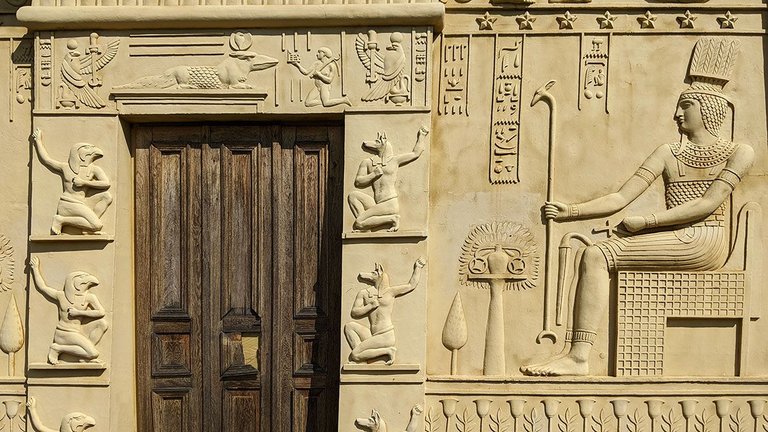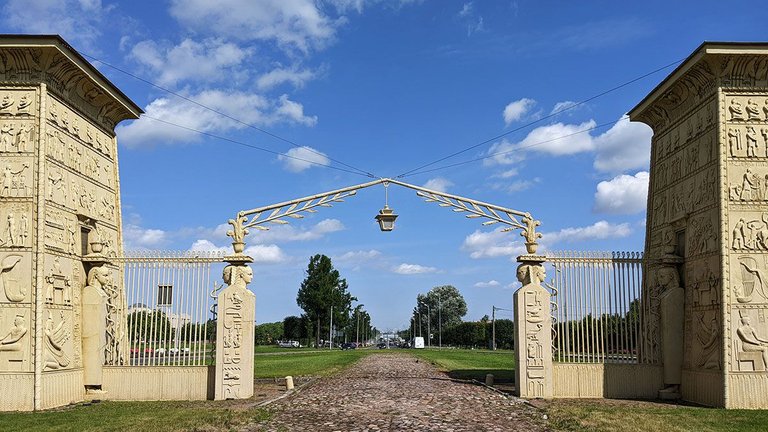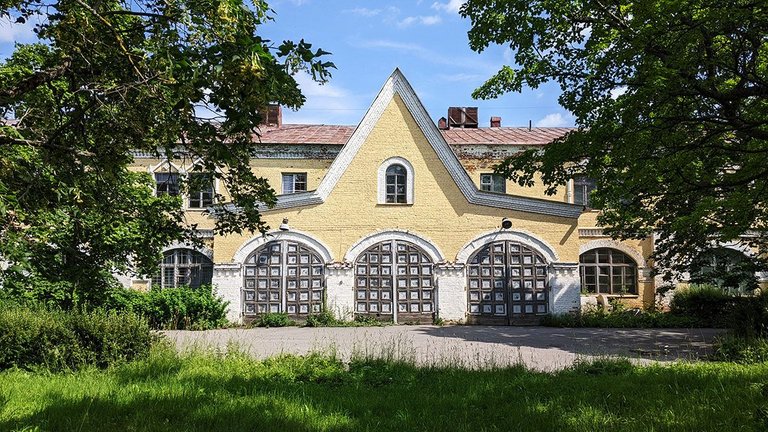
We continue to have December, a gloomy and gloomy month. I go for a walk almost every day, but I don't even try to take photos. Autumn is over, winter hasn't started yet, and the scenery looks faded and dull. Well, it's a good time to continue putting summer photos in order. Today I want to tell you about a walk in Pushkin (Tsarskoye Selo) on one of the first days of July. It was a sunny and warm summer day.


Tsarskoe Selo (Tsar's Village) is an imperial residence. It has palaces and beautiful parks. This time I chose for my walk an area on the outskirts of Tsarskoye Selo. Instead of walking along the park alleys, I walked along one of the boulevards to the old border of this satellite town of St Petersburg. In 1830, the Egyptian Gate was erected on this spot. This gate served as the border of the city until the middle of the XX century, but the mass housing construction of the second half of the XX century first pushed back the border of this city, and then destroyed it. St. Petersburg and Tsarskoye Selo grew towards each other, and now Tsarskoye Selo has become part of the urban agglomeration.


Nowadays the Egyptian Gate is just an architectural monument attracting the attention of tourists. But earlier inside the gate there were guard rooms. The gate is decorated with bas-reliefs with scenes from Egyptian myths. As far as I know, it was not possible to find deep sense in these bas-reliefs, they have purely decorative function. In the city and suburbs you can find some more buildings whose architects were inspired by the architecture of Ancient Egypt. The fascination with Egypt emerged after Napoleon's Egyptian campaign.


From the Egyptian Gate I went to one of the buildings of the Agricultural Institute, built in 1915 - 1916. This building is also an architectural stylisation, but this time the architects were inspired not by ancient Egyptian, but by Old Russian architecture. In front of the facade of the building there is a monument to the outstanding scientist, geologist and soil scientist Vasily Dokuchaev.


The complex of buildings of the Agricultural Institute occupies quite a large area, but all other buildings on the territory were built in later times. Only one building is interesting from the architectural point of view. It was designed and built to be used as a barracks, but after construction it was given to the Agricultural Institute.



The gate to the courtyard is open and I can enter to examine the details. The details look quirky, sometimes even too much so. The towers are decorated with weathervanes, and as far as I can see, there is an image of St George the Victorious placed above one of the towers. From time to time I take my eyes off the architecture to look at the flowering bushes in the courtyard or to breathe in the sweet fragrance of a lime tree in bloom.


I leave the courtyard and walk onwards, towards the Kuzminskoe Highway. On the outskirts of Tsarskoye Selo there is another building that I am going to inspect. It is the imperial pavilion at the now defunct railway station, it has stood abandoned for many years. Now the building is enclosed by a high blue fence, but I manage to see and photograph some fragments. Neither the railway station, nor other station buildings, nor even the railway rails have been preserved.


I came to Tsarskoye Selo by suburban train, but the modern station is located in a completely different place, about three kilometres to the east. The old pavilion dates back to the time when the Alexander Palace in Tsarskoye Selo was a favourite imperial residence, and an additional railway line and railway station were built specifically to connect the palace more conveniently. This branch of the railway served as a fast connection to St. Petersburg as well as to the imperial country residence in Gatchina.




| ○ | ○ |
|---|---|
| Smartphone | Google Pixel 3a |
| Location | Saint Petersburg, Russia |





